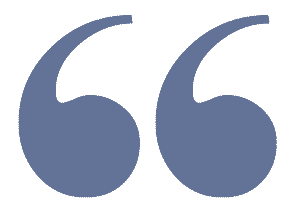Byzantine warrior with gold-threaded jaw unearthed in Greece | Live Science



A rugged Byzantine warrior, who was decapitated following the Ottoman's capture of his fort during the 14th century, had a jaw threaded with gold, a new study finds.
An analysis of the Byzantine warrior's lower jaw revealed that it had been badly fractured in a previous incident, but that a talented physician had used a wire — likely gold crafted — to tie his jaw back together until it healed.
"The jaw was shattered into two pieces," said study author Anagnostis Agelarakis, an anthropology professor in the Department of History at Adelphi University in New York. The discovery of the nearly 650-year-old healed jaw is an amazing find because it shows the accuracy with which "the medical professional was able to put the two major fragments of the jaw together."
What's more, the medical professional appears to have followed advice laid out by the fifth-century B.C. Greek physician Hippocrates, who wrote a treatise covering jaw injuries about 1,800 years before the warrior was wounded.
Related: In photos: 8 Byzantine Empire era shipwrecks excavated in Turkey
Agelarakis and colleagues discovered the warrior's skull and lower jaw at Polystylon fort, an archaeological site in Western Thrace, Greece, in 1991. When the warrior was alive in the 14th century, the Byzantine Empire, also known as the Eastern Roman Empire, was facing attacks from the Ottomans. Given that the warrior was beheaded, it's likely that he fought until the Ottomans overcame Polystylon fort. In other words, it appears that "the fort did not surrender, but that it must have been taken by force," Agelarakis wrote in the study.
As the fort fell, the Ottomans likely captured and then decapitated the warrior; then, an unknown individual likely took the warrior's head and stealthily buried it, probably without the "permission of the subjugators, given that the rest of the body was not recovered," Agelarakis wrote in the study. But the warrior wasn't given his own grave; his head was interred in the pre-existing grave of a 5-year-old child, who was buried in the center of a 20-plot cemetery at Polystylon fort. A broken ceramic vessel, which may have been used to dig the hole for the warrior's head, was uncovered at the burial, Agelarakis added.
The child's burial with the warrior's skull. (Image credit: Anagnostis P. Agelarakis)
It's unknown if there was any familial or other tie between the warrior and the child. Given that the man's skull and jaw were found together, his head likely had soft tissues on it when it was buried in the mid-1380s, Agelarakis noted. The skull showed evidence of a "horrendous frontal impact," which was inflicted around the time of the man's death, he said.
Agelarakis detailed the unique burial in a study published in 2017 in the journal Byzantina Symmeikta. However, the study only briefly addressed the warrior's healed jaw, so Agelarakis investigated that in detail, penning a second, new paper.
Image 1 of 4 Archaeologists excavated the cemetery at Polystylon fort in 1991. (Image credit: Anagnostis P. Agelarakis) Image 1 of 4 Another view of the burial containing the 5-year-old child and the warrior's head. (Image credit: Anagnostis P. Agelarakis) Image 1 of 4 A close-up of the child's burial and the warrior's skull, in the position in which they were unearthed. (Image credit: Anagnostis P. Agelarakis) Image 1 of 4 The child in the burial was about 5 years old, and wore the remains of a bronze-beaded bracelet. (Image credit: Anagnostis P. Agelarakis) Image 1 of 4
Jawbreaker
The cause of the jaw fracture isn't clear, but possibilities include a forceful fall while horseback riding; a battle trauma from a thrust spearhead or another sharp, hand-held weapon; or a ballistic projectile fueled by black powder, Agelarakis wrote in the new study, published online in the September issue of the journal Mediterranean Archaeology and Archaeometry.
What's known is this: The warrior died between the ages of 35 and 40 years old, and about 10 years before that, likely in 1373, he experienced the devastating jaw fracture. An analysis of the teeth on the warrior's lower jaw revealed a line of dental calculus that built up where a thin wire was threaded, zigzagging around the base of the man's teeth to hold his jaw together as it healed, Agelarakis said.
Related: 27 oddest medical cases
Image 1 of 4 Notice the healed fracture at the front of the the warrior's lower jaw. (Image credit: Anagnostis P. Agelarakis) Image 1 of 4 Another view of the warrior's jaw. (Image credit: Anagnostis P. Agelarakis) Image 1 of 4 The interior of the healed warrior's jaw. (Image credit: Anagnostis P. Agelarakis) Image 1 of 4 An illustration of the Byzantine warrior's skull and fractured jaw. (Image credit: Anagnostis P. Agelarakis) Image 1 of 4
The wire is long gone, but Agelarakis suspects it was gold. There was no evidence of a silver alloy, which would have left grayish discoloration, nor were there traces of a patina or greenish cupric acid stains that would have been left by copper or bronze wires, he found.
"It must have been some kind of gold thread, a gold wire or something like that, as is recommended in the Hippocratic corpus that was compiled in the fifth century B.C.," Agelarakis said. Gold is soft and pliable but strong and nontoxic, he added, making it a good choice for this type of medical treatment.
RELATED CONTENT
—In photos: Archaeological discoveries at Hagia Sophia
—Photos: Amazing mosaics in an ancient Church
—In photos: A journey through early Christian Rome
"In one of the dentitions, I saw that the tooth was filed a little bit so that the knot that was tied in the wire would not scratch the cheek," Agelarakis said. "It's very sophisticated — it's flabbergasting."
If the warrior was still on active duty, it must have been difficult for him to lay low and drink liquid foods while his bandaged jaw healed, Agelarakis noted. It's unclear if the warrior's tongue was also wounded in the incident, and whether his speech or pronunciation were affected following treatment, he added. However, if the warrior had a beard or mustache, he could have hidden any disfigurements that persisted after the treatment.
This exceptional medical treatment suggests the warrior was a very important person.
"He was the military leader, most probably of the fort," Agelarakis said. "Therefore, he was decapitated ... by the Ottomans when they took over the fort."
Originally published on Live Science.

